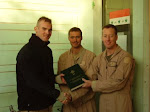While they “rejoice” in the fact that so many couples live out their marriage bond in a holy and happy way, the bishops express their concern for a number of issues that afflict marriage and family life in our day. Among these they cite the lack of understanding on the part of many that marriage is “ a gift from God,” the high incidence of divorce, the lack of openness to the gift of children, the trend to view marriage as a private matter, and the attempt to redefine marriage as something other than a lifelong exclusive bond between man and woman.
Early in the document the bishops address one of the underlying causes of the malaise afflicting many marriages today. The gift of life and the gift of love have been “joined” by God in the one marital act. It is sinful for husband and wife to break the bond between these gifts.“ Couples too often reflect a lack of understanding of the purposes of marriage. There is a loss of belief in the value of those purposes when couples readily treat, as separate choices, the decisions to get married and to have children.”
The document repeats here the longstanding teaching that man and woman must shun an “ antilife will” which is always present, for example, in the use of contraception.
The bishops make clear that it is precisely the complementarity between man and woman, the differences between them, that enables husband and wife in marriage to bring the new communion of the family into being through their own mutual gift of the communion shared between them, through both the life- giving or procreative aspect of marriage and the love- giving, or unitive, aspect of marriage. Neither of these can be rejected without doing damage to the bond of love in the marriage as a whole.
This concept of “complementarity,” then, provides a key ingredient in the Church’s effort to provide a compelling witness for the truth that the word “ marriage” can never be truthfully used to describe any combination of persons other than one man- husband and one woman- wife.
“ It is precisely the difference between man and woman that makes possible this unique communion of persons, the unique partnership of life and love that is marriage. A man and woman united in marriage as husband and wife serve as a symbol of both life and love in a way that no other relationship of human persons can.” The bishops remind us that the “two ends” of marriage are the “unitive” and the “ procreative and educative.” For teaching on the relationship between these two ends of marriage the bishops turn to the Catechism of the Catholic Church, n. 2363, which teaches that “ these two meanings or values of marriage cannot be separated without altering the couple’s spiritual life and compromising the goods of marriage and the future of the family” and, also, that “this inseparability arises from the very nature of conjugal love, a love that ‘stands under the twofold obligation of fidelity and fecundity’.”
Among the challenges to the nature and purposes of marriage the bishops list contraception, samesex unions, divorce, and cohabitation, which they teach is “ intrinsically evil.”
+ + + More next week. For the full text of the bishops’ letter, go to Marriage: Love and Life in the Divine Plan. For daily pairings of the Scriptures of Holy Mass and the teachings of the Catechism of the Catholic Church, visit Meeting Christ in the Liturgy.
(This column appeared in the 26 November 2009 issue of The Wanderer Catholic Newspaper. Fr Cusick writes weekly for The Wanderer.)











No comments:
Post a Comment